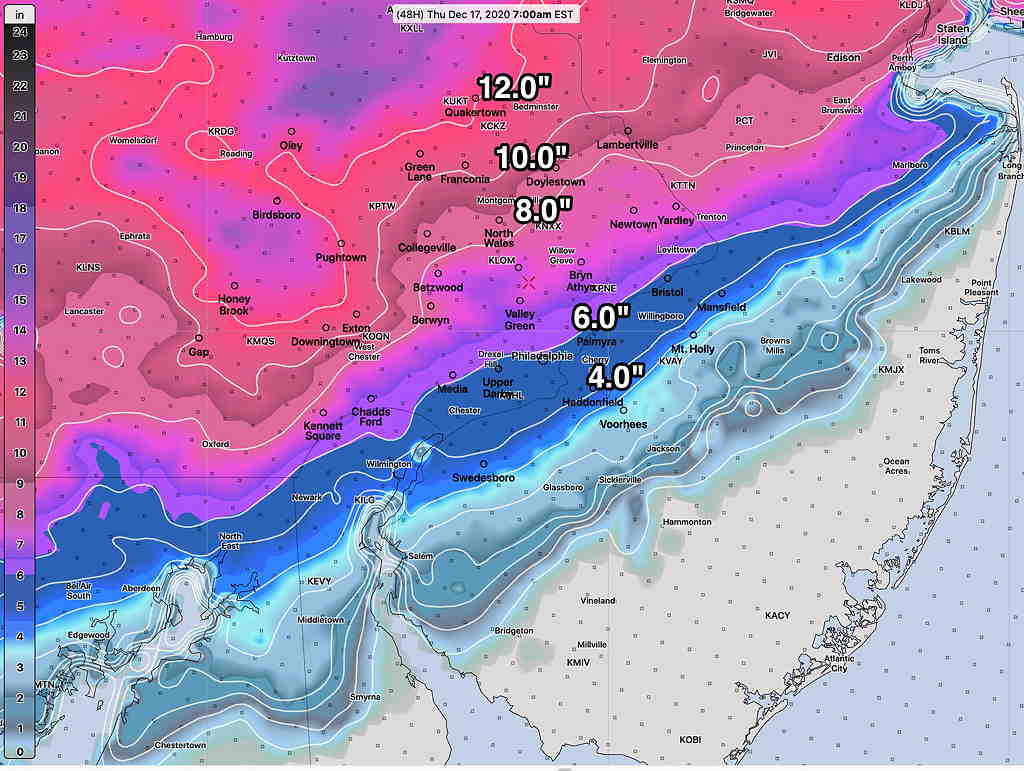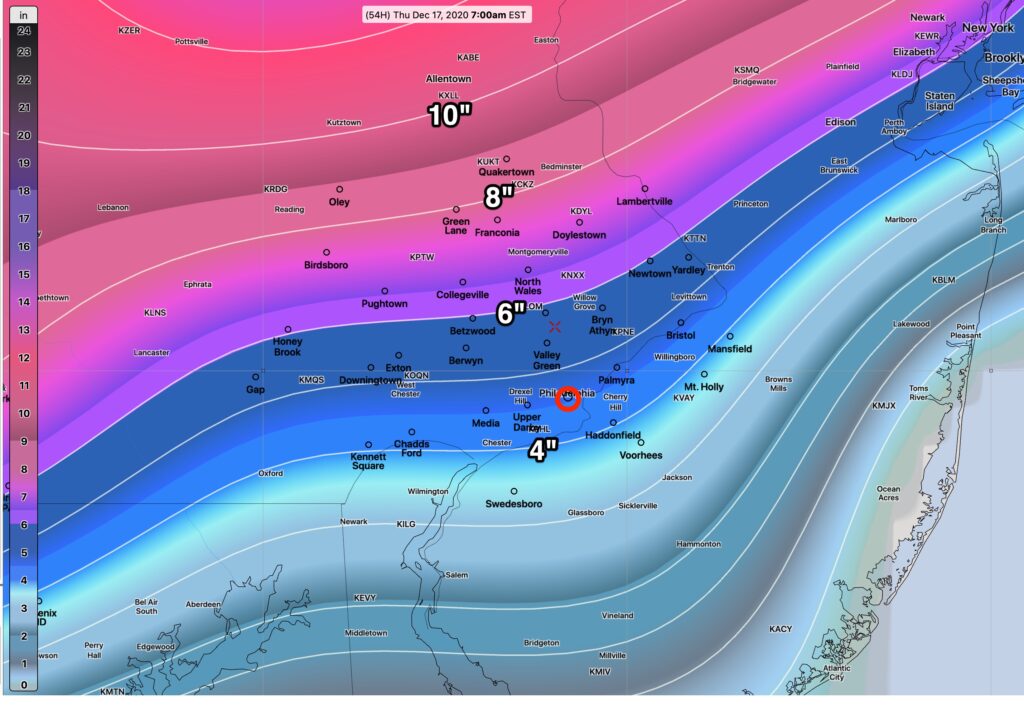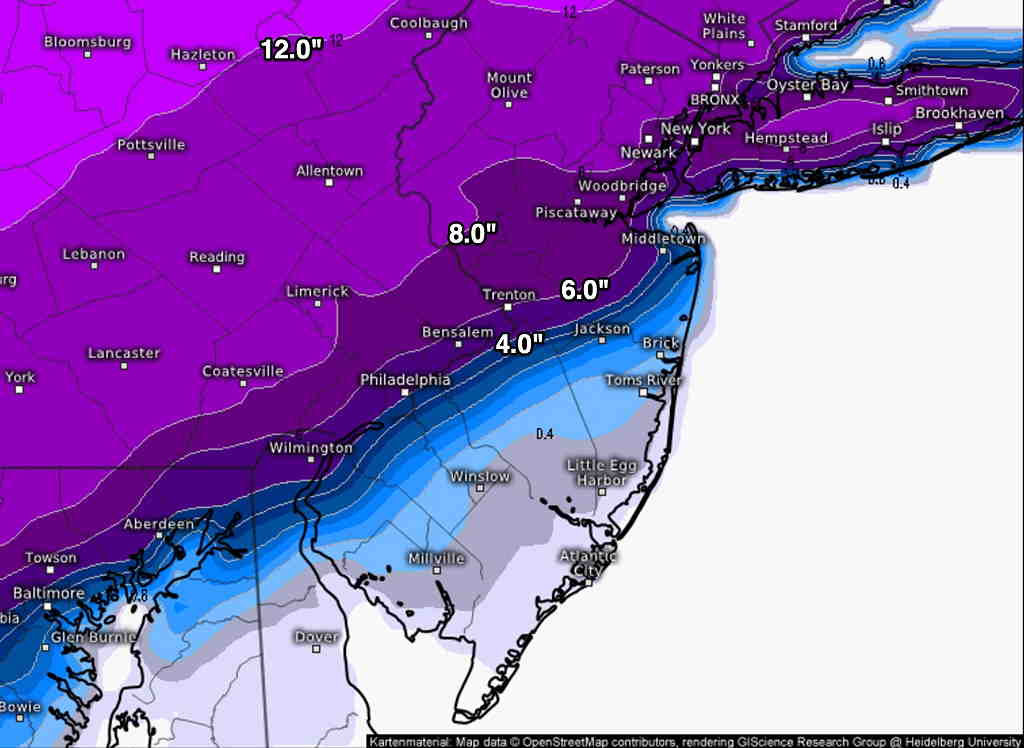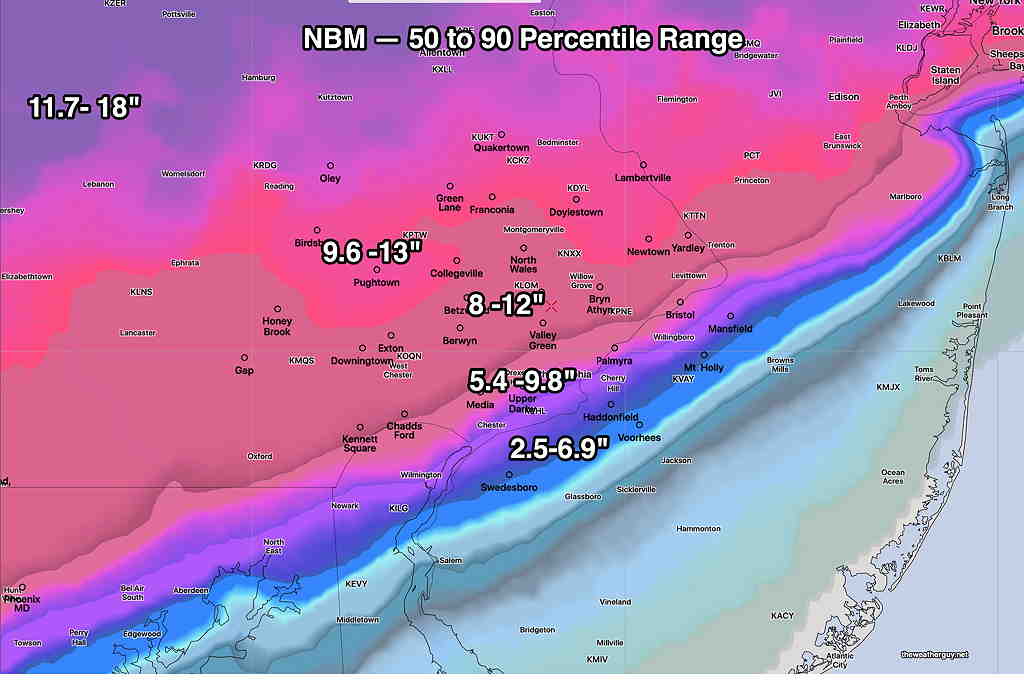Here’s the latest information about the upcoming snowstorm for the Philadelphia area. The timing of the storm has come within the forecast range of the high resolution models.
Here is the current timing based on the latest HRRR (High Resolution Rapid Update) model— snow starts in our area, from southwest to northeast about 12-3 PM Wednesday. Heaviest snow and mixed precipitation during the evening hours Wednesday. Snow ends about 4 AM Thursday morning.
There’s still some uncertainty about warm area mixing in at certain levels, changing the snow to a mix at times and reducing total accumulations. The snow accumulations for several models has reduced a bit in the immediate PHL area, despite the fact that the snow-water equivalent has remained the same. This indicates some mixed precipitation will reduce snow accumulations.
Here’s the current latest HRRR snow totals—

Here are some other perspectives: The German ICON model is somewhat similar—

The European Model (ECMWF), which is run only twice daily. This is the latest forecast from last night (the new model will be available about 2 PM EST today) shows somewhat less—

The NAM just available continues to show the storm a bit further north, introducing warm air into the mix, reducing snow totals from the above values.
Those of you who have been long-time followers of this blog know that I’ve been a big fan of the NAM for snowstorms, but I never used its built-in snow depth forecasts, instead doing the calculation based on FOUS QPF, thickness and temperature data. By those measures, the above forecasts from the above HRRR look pretty good, maybe even on the low side.
So, I think with current model advancements, I’m going to hang my hat on the new NBM model and use the 50-90 Percentiles as the best forecast—

The next big updates in models will be this evening. The NBM 00z forecast becomes available at 8:30 PM EST. The HRRR, NAM between 8:30PM and 10 PM. Stay tuned for more updates…
Tue 10:47 AM Update — Some new models coming in suggest that the lower range of snow (50 percentile numbers above) may be the better choice.
